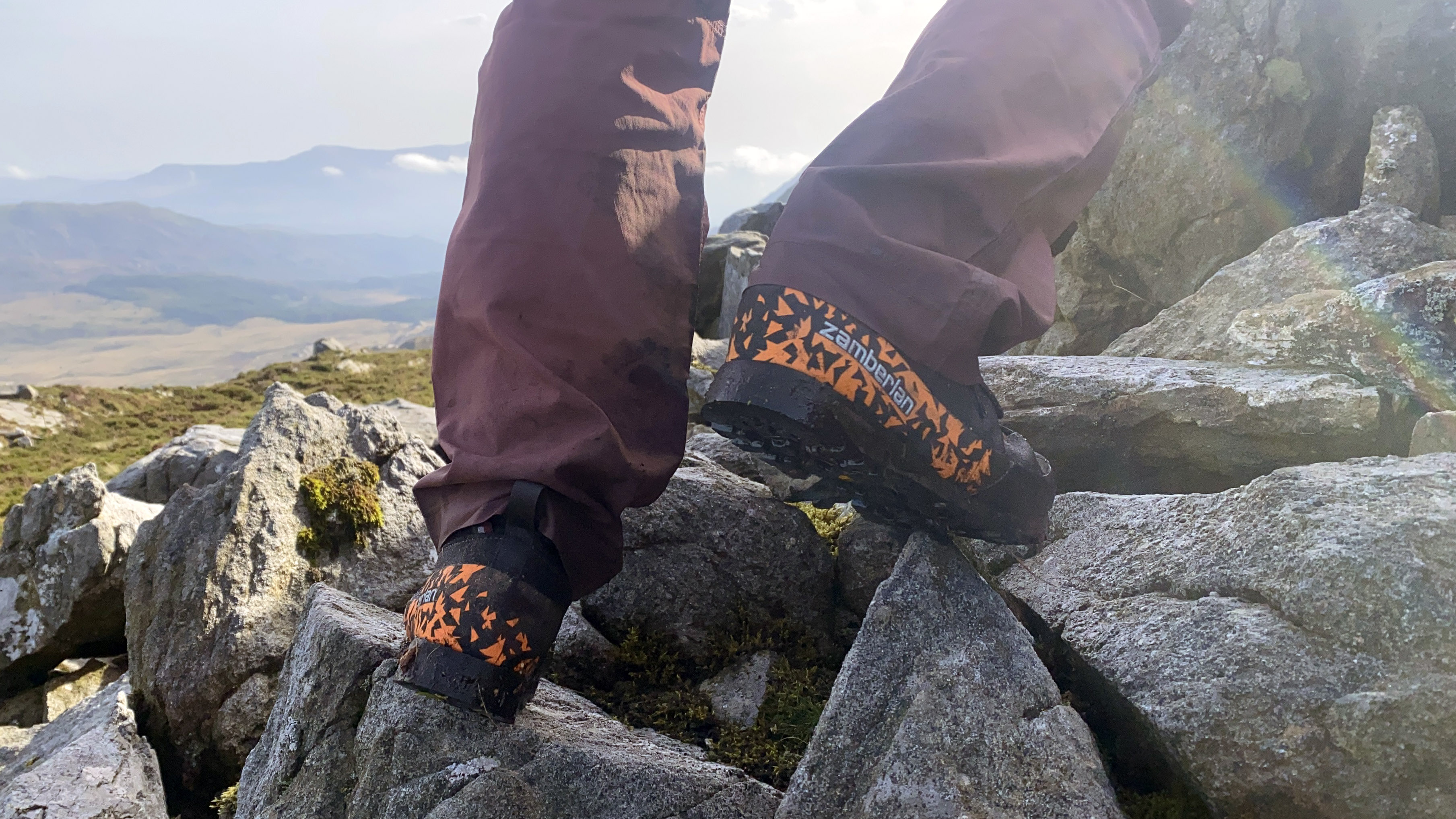
Zamberlan’s Salathé approach shoes are named after something that was originally named after someone else. Let me explain. John Salathé was a pioneering Swiss-born American Yosemite rock climber, blacksmith and the inventor of the steel piton. He died in 1992 but his legacy lives on in various forms, including the iconic 35-pitch Salathé Wall route on the famous El Capitan. Incidentally, the route was named in Salathé’s honor by another well-known blacksmith-cum-climber, Yvon Chouinard, the founder of leading outdoor brand Patagonia.
Still with me? Well, according to Zamberlan’s website, the Salathé is named after the route, not the man. Either way, the name points towards its intended wearer – someone who likes climbing rock!

It’s a technical approach shoe that Zamberlan says has been created to go “from the car to the top”. It’s most at home on via ferrata, difficult scrambling and easy climbing terrain, while supposedly versatile enough for hiking and trekking use too. It’s waterproof, certainly looks the business and comes from an Italian brand with a reputation for handmade quality. Let’s get into it.
Meet the reviewer
First Impressions
This is a classy-looking piece of mountaineering footwear that blends the suede elegance of a classic approach shoe, the visual flair of fellow Italian brands Scarpa and La Sportiva, and protective clout akin to a winter hiking boot.

List price: $295 (US) £230 (UK)
Materials: Upper: Suede with Hydrobloc treatment and Gore-Tex Extended Comfort Lining / Midsole: EVA / Outsole: Vibram Pepe with Megagrip
Weight (per shoe): 450g / 15.9 oz
Colors: Black, Dark Grey, Taupe, Blue, Yellow, Violet/Yellow, Red/Orange, Lilac/Yellow, Violet/Pink, Pink/Orange, Red/Pale Blue, Pale Blue/Beige (availability of colors varies across regions)
Best for: Via ferrata, scrambling, easier climbs
Press against the toes, heel and right across the wrap-around PU rand, and there’s very little give, providing an impression of rock-ready sturdiness. This level of protection comes with a slight weight penalty, with each shoe weighing in at 450g (15.9 oz). If you value speed over protection, a lighter pair might be a better option.
However, slip your feet into the Salathés and they feel a world away from rigid boots – the slightly higher weight is soon forgotten. The sock-like fit, elasticated collar and gusset and ample padding make them very comfortable from the outset. Fit-wise, they’re reassuringly snug and precise feeling, which is exactly what’s required when terrain veers towards the vertical.
Protection and comfort
The Salathé’s upper features hard-wearing 1.6mm to 1.8mm suede with a substantial wrap-around PU rand for additional protection against abrasion. In terms of waterproofing, the suede is enhanced with Zamberlan’s proprietary Hydrobloc proofing, while there’s an Extended Comfort Gore-Tex lining too. This creates an effective and breathable waterproof shield – essential for many mountain adventures.
The gusseted tongue and elasticated collar create a pleasant, sock-like fit. The height of the collar, which Zamberlan call “up-cut” provides protection akin to a mid-height shoe, though its elastic qualities mean that it doesn’t feel restrictive, thus still providing the sense of freedom the wearer gets from a low shoe. Meanwhile, ankle to toe lacing allows the wearer to fine tune the fit.
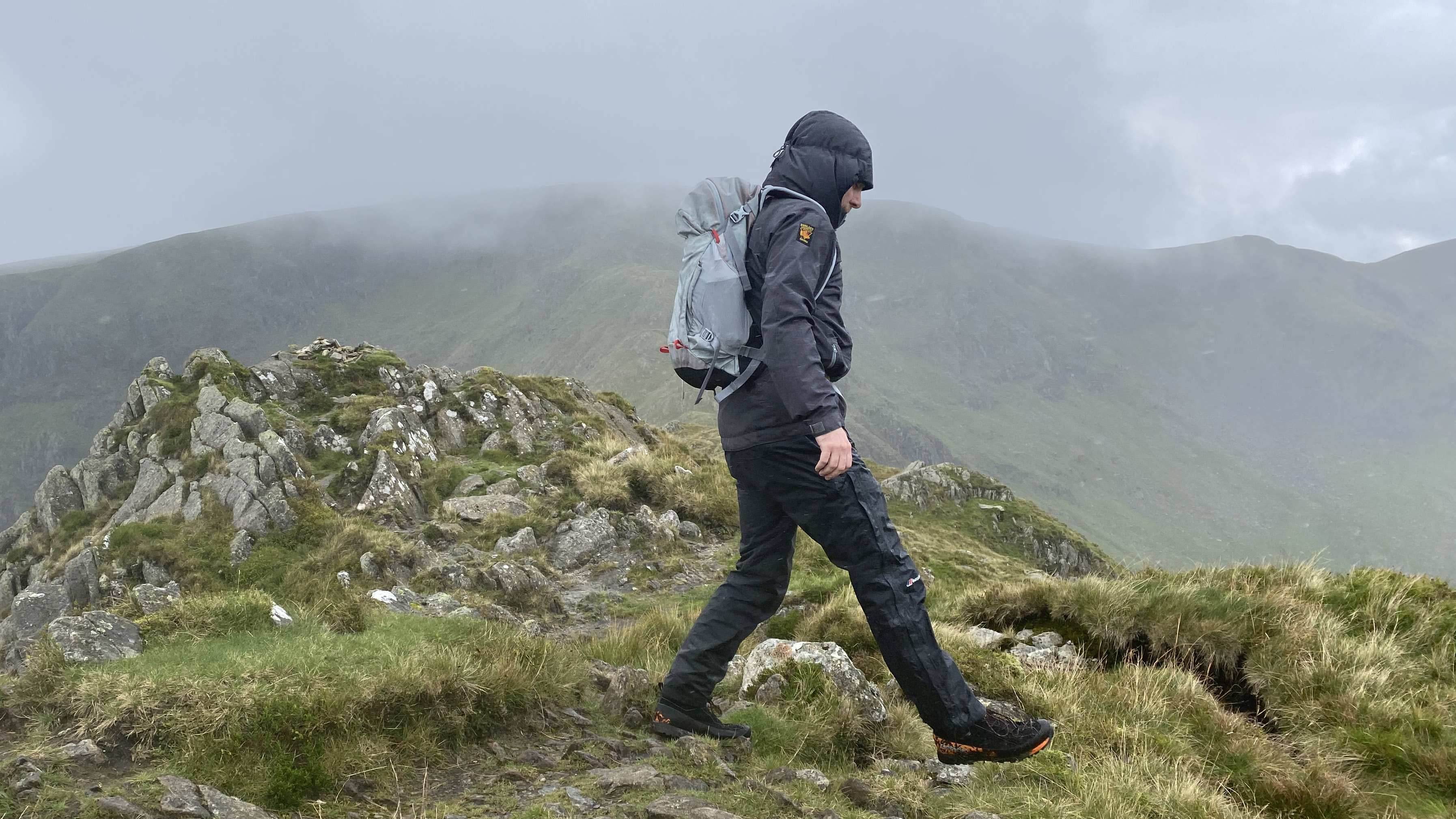
The EVA midsole is designed to absorb the various shocks a day on the trails can bring, shielding the foot from the often ferocious battles the outsole wages with the rocks below.
Vibram provides the outsole, which contains the same Megagrip compound found in the likes of the Scarpa Crux and the La Sportiva TX Guide Leather. One of Megagrip’s selling points is that it holds well on both wet and dry surfaces, making it particularly well suited to mountaineering footwear.
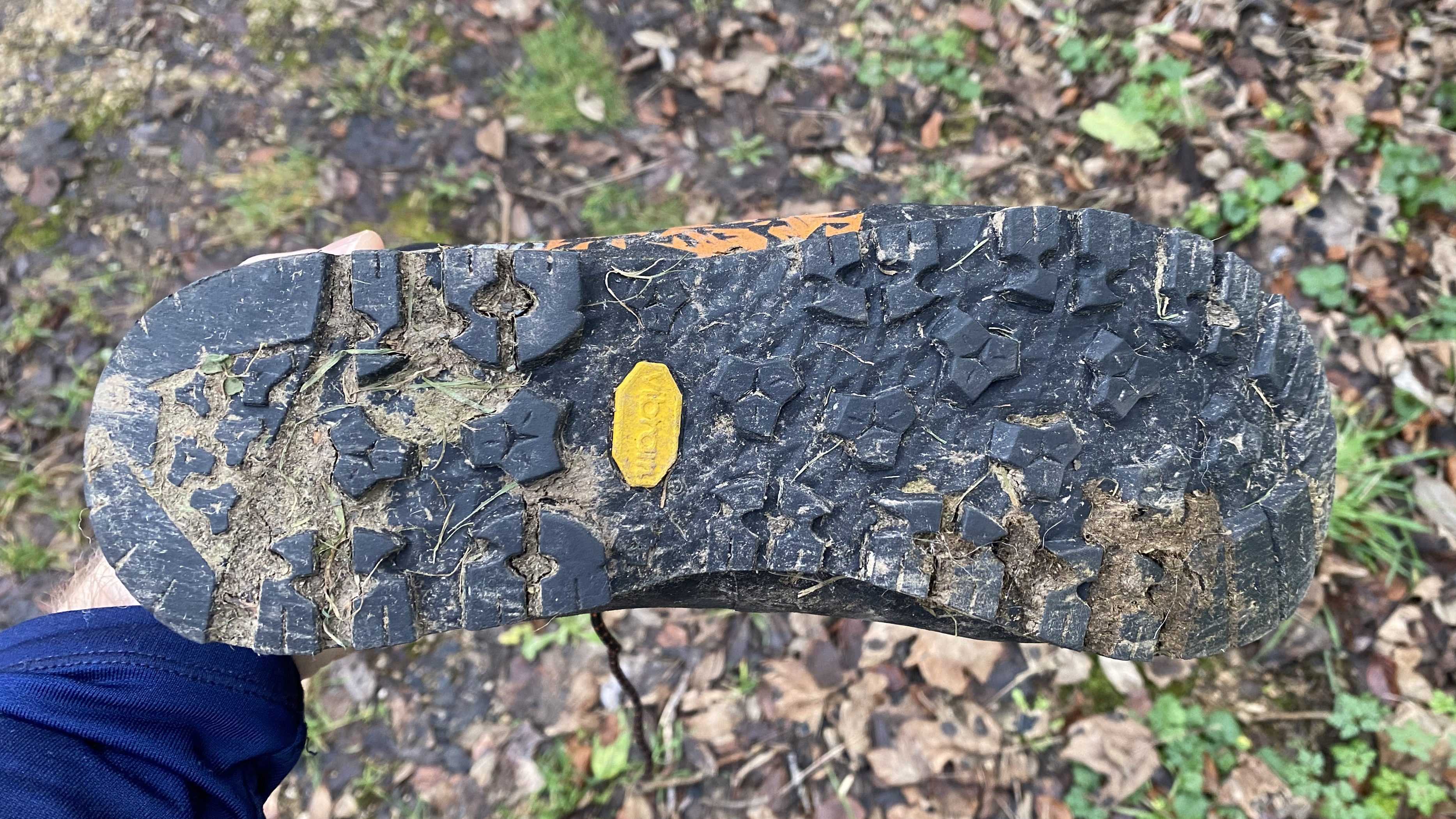
As is standard for approach shoes, the lug pattern features flatter climbing zones at the toes and heel for maximum surface area when edging and smearing. This allows the wearer to take on angled slabs with confidence. Between these sections are multi-directional lugs, which still provide a good amount of surface on rock, while being deep enough to effectively grip muddy terrain.
On the rock
I wore the Salathé on multiple hiking and scrambling days in England’s Lake District and Wales’s Eryri (Snowdonia) National Parks.
Scrambling terrain is where the Salathé really shines, providing almost climbing shoe confidence with a great deal more protection and comfort. Hard scrambles and easier climbing routes are its bread and butter, and I could well imagine it being the perfect tool for via Ferrata adventures too.
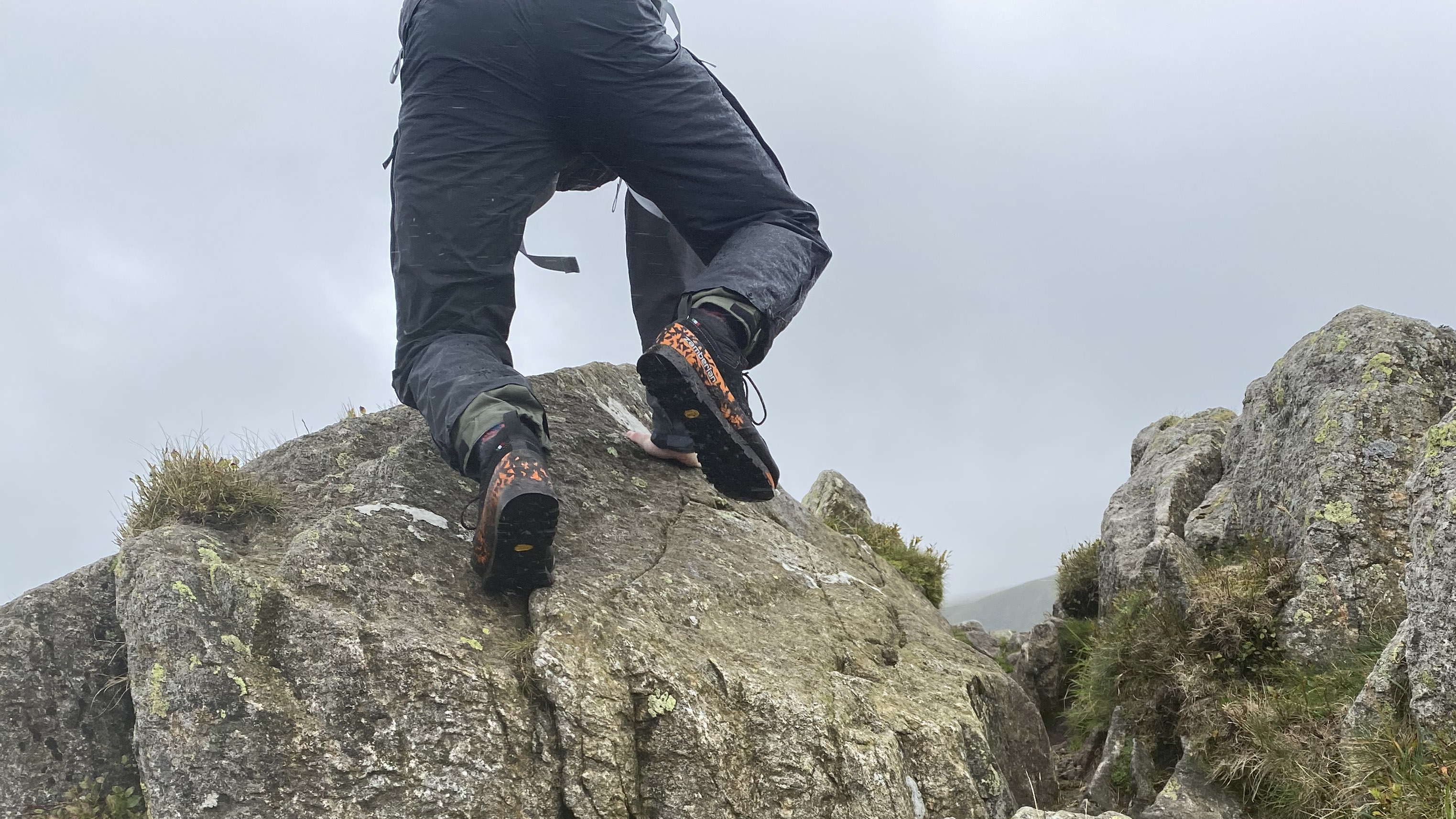
The level of protection provided by the sturdy sole, cushioned midsole and wrap-around rand meant that I was able to be very aggressive when jamming my foot into cracks and the like. All the while, my foot felt nicely insulated and shielded in the sock-like cocoon. They’re admittedly slightly heavier than some approach shoes, which is the price you pay for the level of protection here.
The Vibram Megagrip sole held its own even on wet rock, while the surface area it provides was reassuring on slabby sections – it gave an ironclad grip on pretty steeply angled stuff. Meanwhile, the snug-fit afforded a sense of precision that you just don’t get with beefier hiking boots.
On the trails
While the Salathé is a very accomplished scrambler, I was less convinced with it as a hiking shoe, which is a task Zamberlan say it’s “perfect” for. Sure, the waterproofing kept my feet dry and they were comfortable to wear, but I felt as though they lacked stability on uneven terrain, especially when descending. For me, it felt as though my weight wasn’t being distributed well with each step. This wasn’t a problem on easy, flatter ground but on rocky trails I often felt like I was going to turn my ankle and I had to catch myself on a few occasions.
Curious as to what was going on, I decided to get the tape measure out. At the widest part of the forefoot, the outsole on the Salathé is 97mm across and the widest part of the heel measures at 75mm. This is slightly narrower than other approach shoes I’ve tested, such as Aku’s Rock DFS GTX, which measures 100mm at the front and 82mm at the heel. For the record, I tested each pair in a size 8.
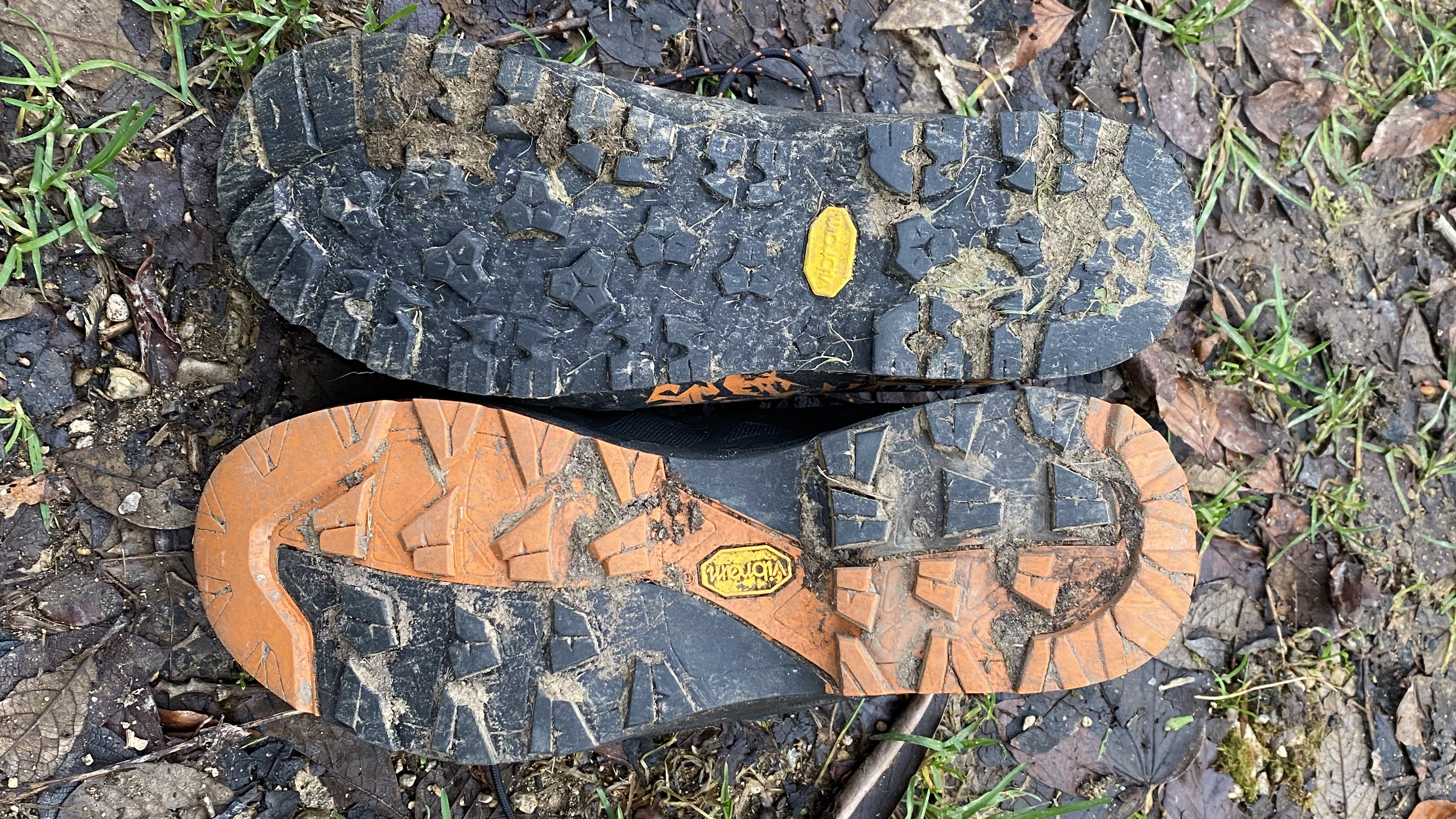
In a direct comparison on the trails, there’s no doubt Aku’s Rock gave me more stability and I’m much happier moving at speed over loose terrain in them. Whether or not this is all down to the sole’s dimensions or if it’s partly to do with my own gait – or perhaps it’s that Aku's last is better suited to my foot shape – is hard to say.
Of course, the narrower profile of the Salathé makes it more suited to precise footwork on the crag, which climbers will prefer. In summary, I’d say this an approach shoe that’s a better match for climbers than hikers.







